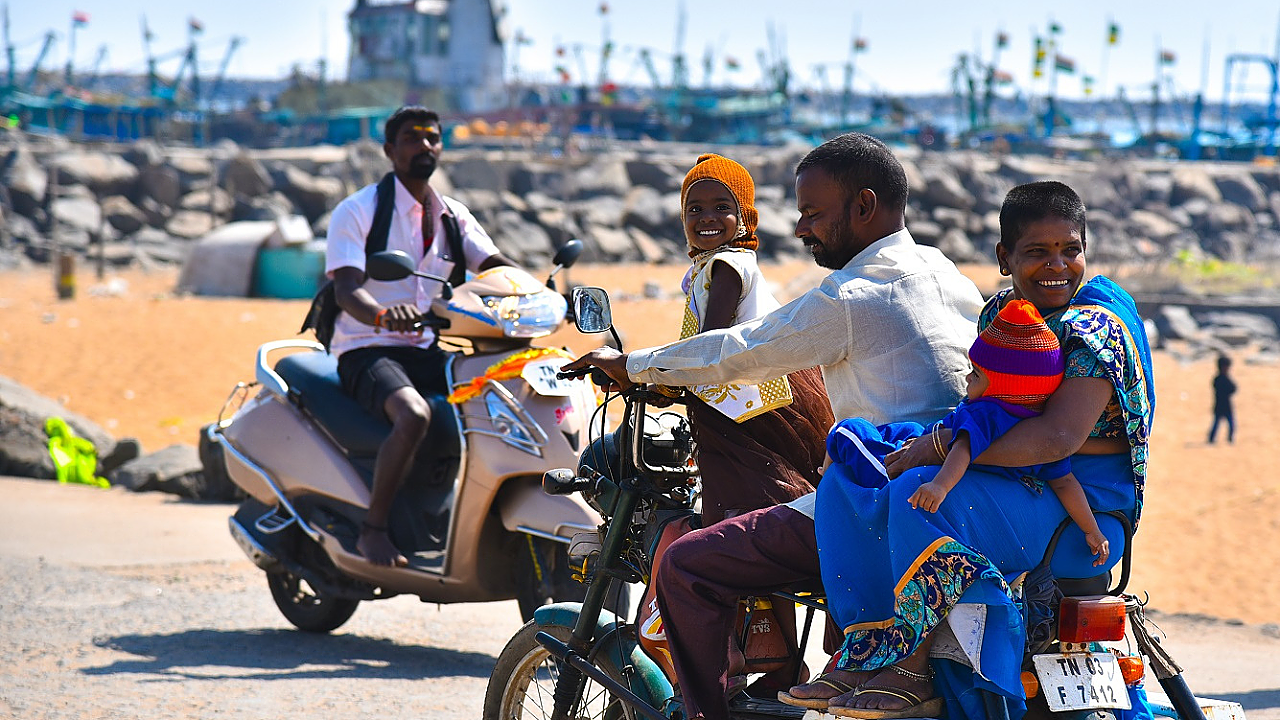
“No level of electronic aid can safeguard riders from road mishaps until and unless they abide by the rules and manoeuvre the machines properly,” Sandeep Bharadwaj, CEO, PMI Electro Mobility Solutions and an avid bike rider, has said.
Participating in a panel discussion - Two-wheelers Key To Bringing Road Fatalities Down by 50% by 2025, as part of the second virtual edition of the webinar - 'Making Mobility Safe, Secure' organised by Mobility Outlook, Bharadwaj expressed concern about several people riding without helmets and even without footwear.
Moreover, people do not realise that a human skull can crush with a force of 2kg, whereas the strongest bone in the human body, the thigh bone, can crush with a force of 75kg. Therefore, “even if a truck carrying 25 tonne of load approaches a two-wheeler at a speed of 2kmph, the rider has no chance of survival,” he asserted.
Higer Fatalities In 2Ws
On a daily basis, India witnesses over 400 road accidents, Ramashankar Pandey, MD, Hella India Lighting, noted while presenting his views at the panel discussion. Of this, about 190 are 2W riders whose economic stature is low. So, it is not only the loss of an individual's life but a loss to the family and the country. “As an industry, we have failed to convince people on how vehicles can be manoeuvred properly,' he said.
Role Of Tyres
Sharing his thoughts from the tyre industry perspective, V Sivaramakrishnan, CTO, TVS Srichakra, said that around 90-95% of road crashes can be traced back to negligence of basic maintenance or basic awareness and understanding of the person using that product or using the vehicle.
Technology
From the technology standpoint, Shitalkumar Joshi, Head (Technical), India, ASEAN and ANZ, Ansys, said that the arrival of electric vehicles will have another layer of safety in the 2W segment with the requirements of battery safety.
The IACC 2022 report, released during the event, shows that around 21% of the respondents are still hesitating to buy an e2W due to safety concerns around the vehicle type, especially after the slew of battery fire incidents happened earlier this year.
With the new age mobility coming in, concerns about cyber attacks also arise, Joshi added.

Interplay Needed
Is there a solution to reduce road accidents? Can it be contained only through technology? Experts believe that every stakeholder, from the Government to OEMs, must come together to educate the public about the basics of road safety and introduce technologies relevant to Indian conditions.
Bhardwaj emphasised that no level of technology can beat the laws of physics; hence to reduce road accidents, people must learn how to use automobiles and abide by the rules.
India is a very price-sensitive market, and technology addition will add to the cost of the vehicle, which will, in turn, affect sales.
How Can Industry Help?
Pandey opined that the industry could start with coaching, mentoring and education. He believes that enforcement will never work in a country like India, where people have a tendency to go against rules. Notably, India is a young country, and its youth population is growing by the day. This young generation believes that reckless driving has a 'cool factor.'
This mindset has developed over a while through various mediums, in addition to older generations who taught them to ride a 2W, seeking shortcuts and breaking the rules. In addition, video games have contributed to the mindset with the common theme of reaching the finish line as soon as possible.
The Hella India Chief added that adding a ‘cool factor' to safety might help create awareness among people, and it can be achieved using technology. Starting with video games, Pandey opined that the gaming industry can develop games which communicate the message of driving safely. Many organisations can adopt these measures to train their employees and incentivise them to follow such behaviour.
Moreover, on the technology side, rather than focusing on high-end features such as ADAS, EBD and ABS, Indian OEMs should bring out technologies that are more focused towards the Indian market and cater to the ground-level problem.
Sivaramakrishnan opined that the Government could look up to adding road safety measures as a part of the education curriculum while OEMs tie up with various institutes to train the students on the same. 'Catch them young and educate them on the right things for safety. Safety can even be part of the curriculum,' he suggested. He opined that the vehicle makers can develop technologies that can shut the rider's mobile once his vehicle starts moving or even a helmet-sensing technology wherein the 2W doesn’t start until the rider wears a helmet. Ultimately awareness and education will be the true catalyst for the path toward safer roads, he noted.
“While every stakeholder is doing their bit in making the rides safer on the Indian roads, I think, as a part of our social cause we must spread awareness and educate the users on how to make a ride safer and what precautions should be taken while riding a 2W or driving a vehicle as well,” the TVS Srichakra, CTO stated.
Meanwhile, with the new age mobility, Joshi said using modelling and analysis tools to ensure that electronics architecture with many connections and interfaces are impervious to cyber attacks can help get a safe vehicle.
Summarising the discussion, Joshi said that national-level awareness programmes can lead to safer roads, and technology can be a parallel driver to it.
Also Read
PMI Electro Expects INR 900 Crore Revenue In FY2023
More Than Technology, Road Discipline Can Curb Fatalities
Steelbird International Joins Hella India To Introduce 2W Horns, Spark Plugs
TVS Srichakra Forays Into Indonesia With Eurogrip 2W Tyre Range
Ansys Joins Intel Foundry Services' Design Ecosystem Alliance